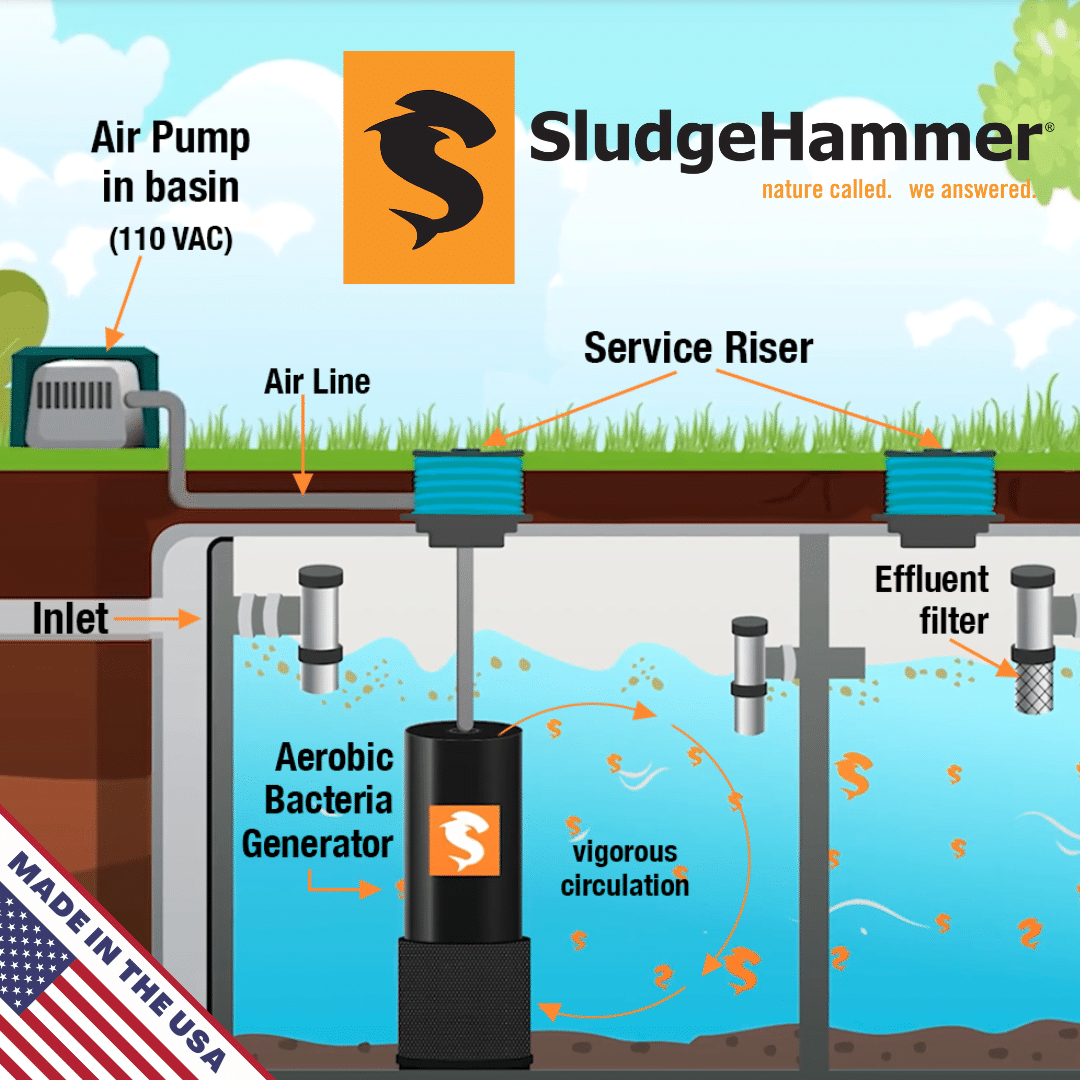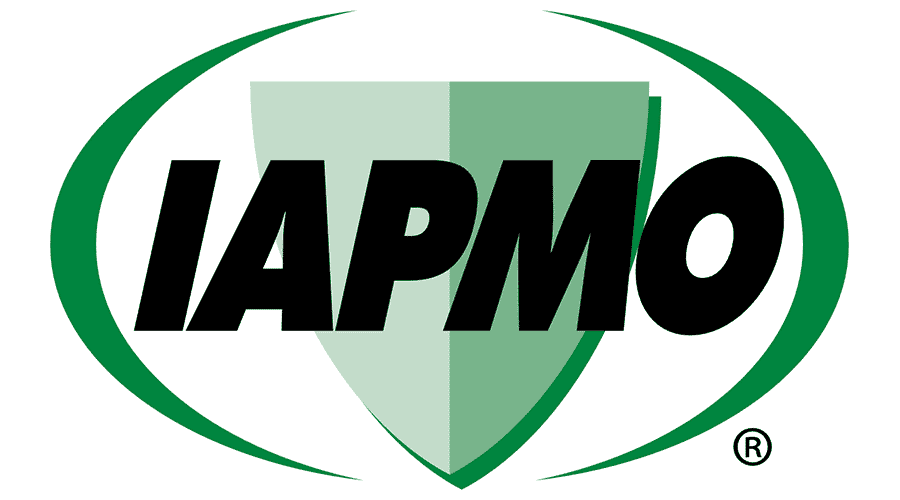Septic systems are essential to many homes, especially in rural areas where connecting to a public sewer system may not be possible or cost-effective. Septic systems are underground wastewater treatment systems that are designed to treat and dispose of household wastewater onsite. In this blog post, we’ll explore how a septic system works, the role of bacteria in a septic tank, how to maintain a septic tank, why septic systems fail, the signs of a failing system, and a new solution called SludgeHammer®.
Components of a Septic System
A septic system consists of several components that work together to treat and dispose of household wastewater. The main parts of a septic system include:
- Inlet Chamber: The first and largest part of the tank, where heavy solids, toilet paper, feces, and food from the kitchen are retained.
- Baffle Wall: This wall separates the inlet chamber from the outlet chamber and allows the liquid portion of the waste to pass to the next chamber.
- Outlet Chamber: The second chamber provides extra time for separating and settling solids.
- Tank Outlet: The outlet from the tank usually has a vertical Tee, so the liquid passing out of the pipe from the tank goes down below any scum that might be floating to get into the pipe to go to the leachfield.
- Leachfield: The leach field usually consists of gravel-filled trenches with a perforated pipe. The liquid flows out of the tank, down the pipe, and over the gravel, where it can percolate into the soil.
Bacteria in a Septic Tank
Septic tanks rely on bacteria to break down waste. The bacteria in a septic tank primarily come from human intestinal bacteria in the feces. Only anaerobic bacteria from the feces survive in the tank. They are very inefficient and do little more than liquify some of the particles in the waste. Proteins can be broken down into ammonia but do very little. You can buy bacterial spores in the hardware that people add to septic tanks, but they need oxygen to germinate, so they are a waste of money.
Maintaining a Septic Tank
Septic tanks require regular maintenance to function correctly. It is recommended that tanks are pumped every 3-5 years or so, depending on their load. Some people only pump once the system fails, then they have to since the liquid is backing up into the house. It’s also essential not to put things like Handi-Wipes into the tank, as they can clog pipes going out.
Why Do Septic Systems Fail?
The primary reason for septic system failure is mucus accumulation over time, called “biomat” failure. If you do not pump your tank as often as you need, the scum and sludge layers get thicker and thicker. The liquid layer between them disappears, and septic solids like toilet paper and feces go out and clog lines, soil, and distribution boxes. Homeowners must also be careful not to rinse paint from working on the house or use excessive amounts of chlorine that can kill the tank.
Signs Your Septic System is Failing
The earliest sign of a failing septic system is often evidence of green, lush grass over the leach trenches when the rest of the lawn is drier. The next sign is when you open a tank and see the liquid level in the tank higher than the bottom of the pipe that leaves the tank. Sometimes you will see seepage coming up into the yard. The ultimate clue is when your plumbing backs up into the house.
The Solution: SludgeHammer®
SludgeHammer® is a unique solution to fix failed leach systems without digging and replacing them, which can be a disaster in mature landscaping. SludgeHammer®’s use of biology to fix a biological problem makes it different and better. It works quietly inside the tank using air from a blower, making it a noise-free solution. Unlike other solutions, no heavy equipment is used, which means no damage to the landscaping. In addition, SludgeHammer® eliminates the odors in the septic system, making it no longer a “septic” tank. The bacteria recover and protect the leachfield soil, much like an insurance policy, and the liquid quality improves significantly. The liquid can even be recovered with irrigation systems like sub-surface drip, which both waters and fertilizes landscape vegetation, making it a valuable commodity. Overall, SludgeHammer® is a unique and effective solution that provides a better alternative to traditional septic solutions.






